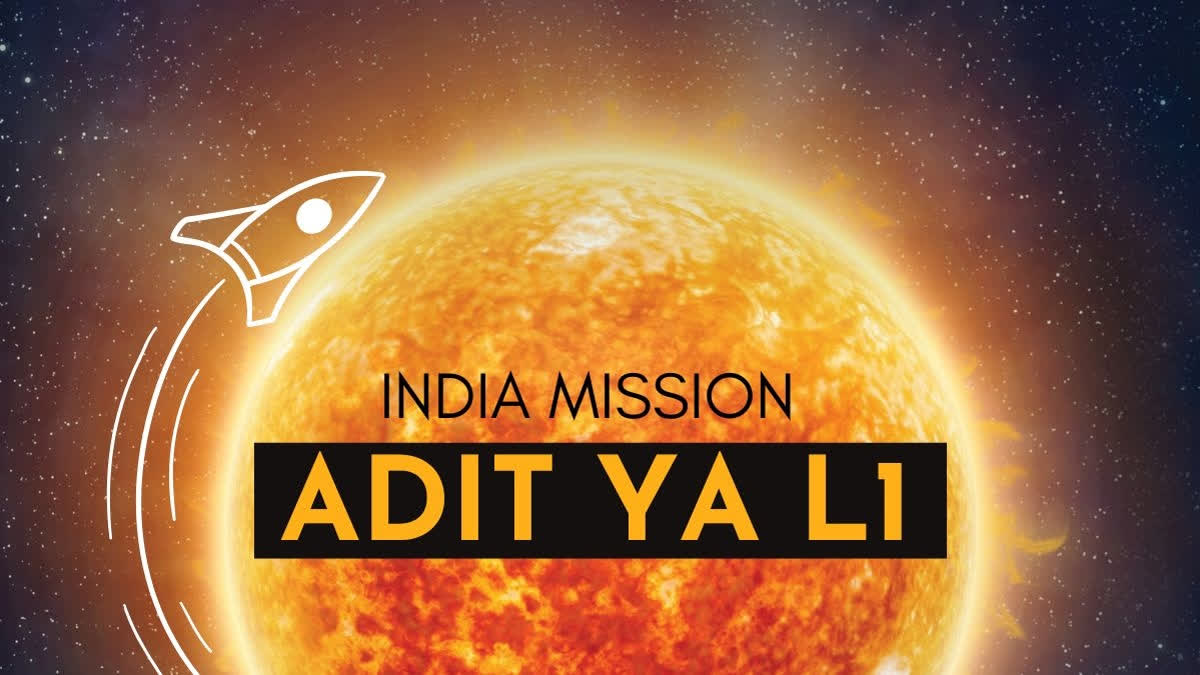New Delhi: In a significant development, ISRO on Monday announced that the Supra Thermal & Energetic Particle Spectrometer (STEPS) instrument, a part of the Aditya Solar Wind Particle EXperiment (ASPEX) payload, has begun the collection of scientific data.
Indian Research Space Organisation(ISRO) took to 'X' to announce the latest update of the India's first solar space observatory Aditya-L1 by the PSLV-C57. "Aditya-L1 has commenced collecting scientific data. The sensors of the STEPS instrument have begun measuring supra-thermal and energetic ions and electrons at distances greater than 50,000 km from Earth. This data helps scientists analyze the behaviour of particles surrounding Earth. The figure displays variations in the energetic particle environment, collected by one of the units", said ISRO.
-
Aditya-L1 Mission:
— ISRO (@isro) September 18, 2023 " class="align-text-top noRightClick twitterSection" data="
Aditya-L1 has commenced collecting scientific data.
The sensors of the STEPS instrument have begun measuring supra-thermal and energetic ions and electrons at distances greater than 50,000 km from Earth.
This data helps scientists analyze the behaviour of… pic.twitter.com/kkLXFoy3Ri
">Aditya-L1 Mission:
— ISRO (@isro) September 18, 2023
Aditya-L1 has commenced collecting scientific data.
The sensors of the STEPS instrument have begun measuring supra-thermal and energetic ions and electrons at distances greater than 50,000 km from Earth.
This data helps scientists analyze the behaviour of… pic.twitter.com/kkLXFoy3RiAditya-L1 Mission:
— ISRO (@isro) September 18, 2023
Aditya-L1 has commenced collecting scientific data.
The sensors of the STEPS instrument have begun measuring supra-thermal and energetic ions and electrons at distances greater than 50,000 km from Earth.
This data helps scientists analyze the behaviour of… pic.twitter.com/kkLXFoy3Ri
Notably, STEPS instrument comprises six sensors, each observing in different directions and measuring supra-thermal and energetic ions ranging from 20 keV/nucleon to 5 MeV/nucleon, in addition to electrons exceeding 1 MeV. These measurements are conducted using low and high-energy particle spectrometers. The data collected during Earth’s orbits helps scientists to analyse the behaviour of particles surrounding the Earth, especially in the presence of the magnetic field of Earth.
Also read: Aditya L1 successfully undergoes 3rd earth-bound manoeuvre: ISRO
STEPS was activated on September 10, 2023, at a distance greater than 50,000 km from Earth. This distance is equivalent to more than 8 times the Earth's radius, placing it well beyond Earth's radiation belt region. After completing the necessary instrument health checks, data collection continued until the spacecraft had moved farther than 50,000 km from Earth.
"Each unit of STEPS is operating within normal parameters. A figure displays measurements depicting variations in the energetic particle environment within Earth's magnetosphere, collected by one of the units. These STEPS measurements will persist during the cruise phase of the Aditya-L1 mission as it progresses toward the Sun-Earth L1 point. They will continue once the spacecraft is positioned in its intended orbit. Data collected around L1 would provide insights into the origin, acceleration, and anisotropy of solar wind and space weather phenomena", ISRO informed.
Also read: Aditya L1 successfully undergoes fourth earth-bound manoeuvre: ISRO



